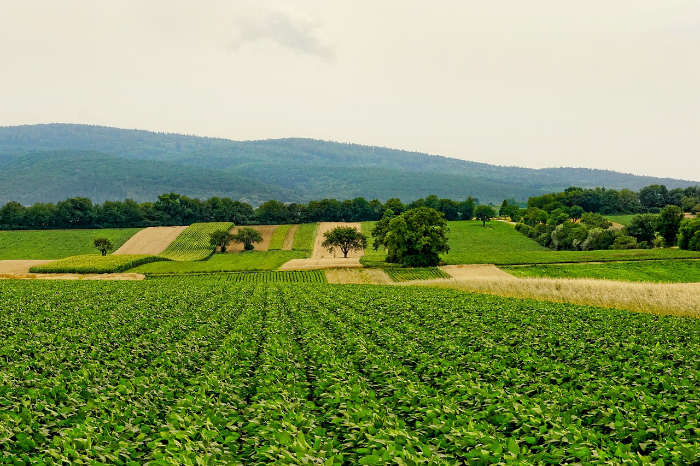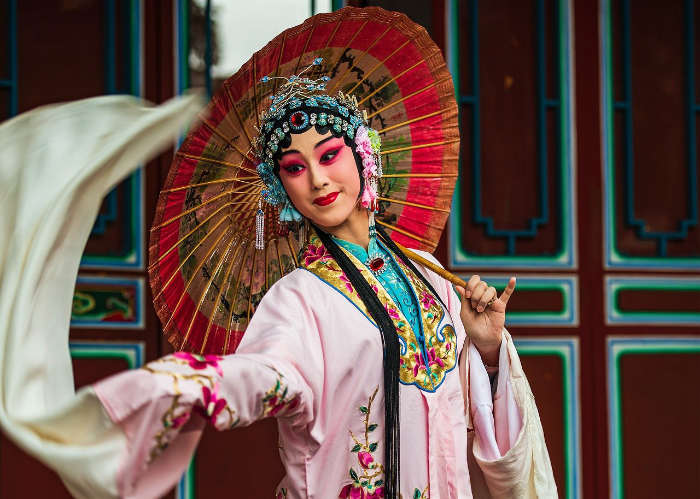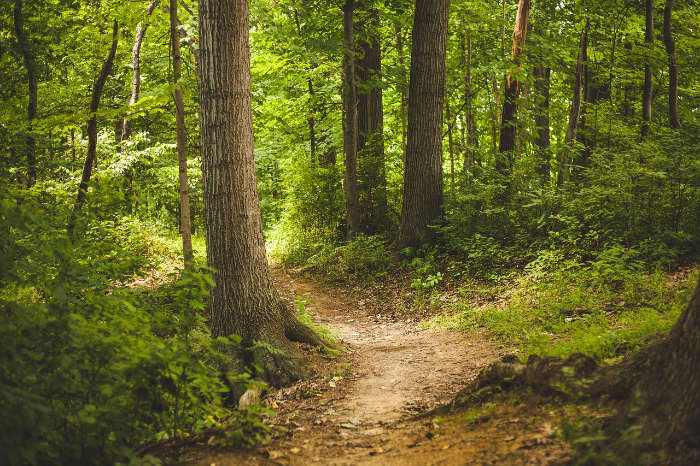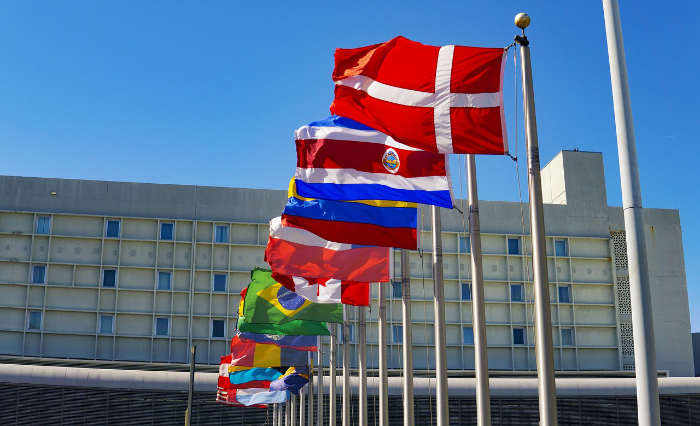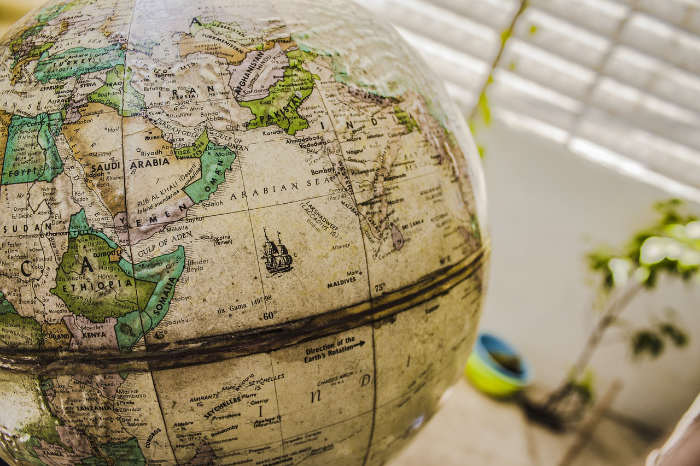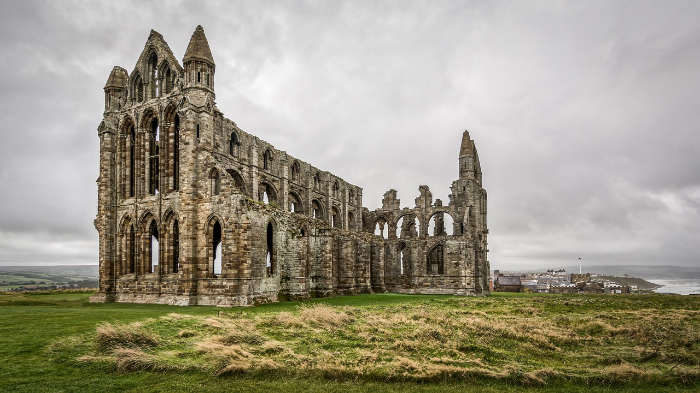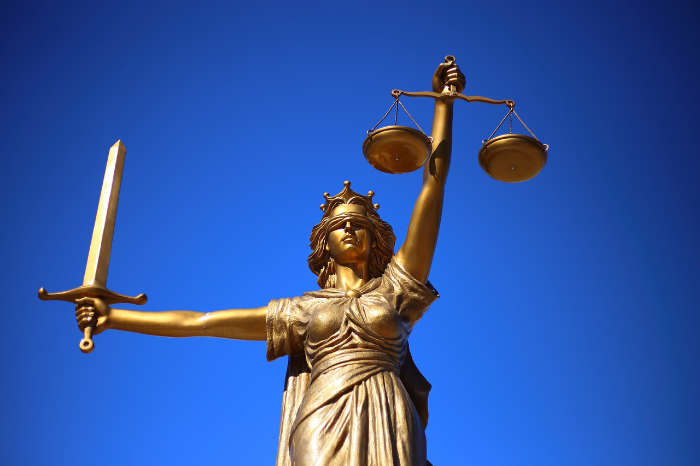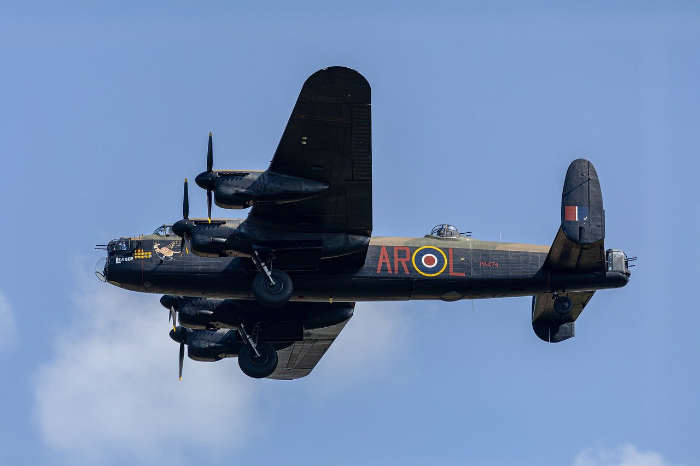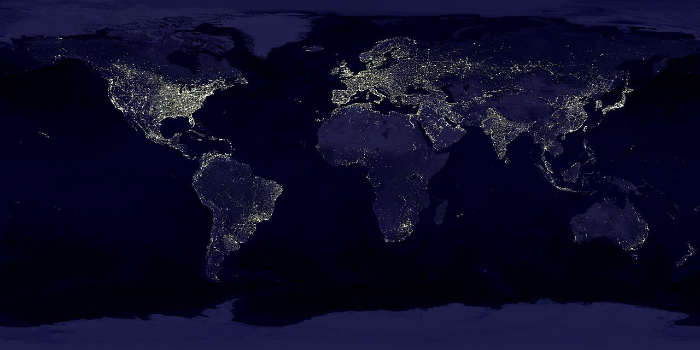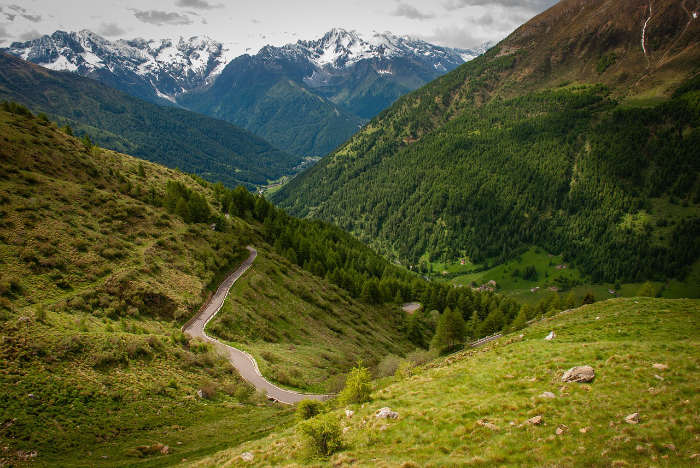Mythical Creatures by Country 2025

Country | Mythical Creature Name↓ | Brief Description | Detailed Description | |
|---|---|---|---|---|
| Eritrea | Zar | Human-possessing spirit | Invisible spirits that possess the living. | |
| Nepal | Yeti | Humanoid creature | Bigfoot-like tall humanoid, covered in pale fur or hair. | |
| Bhutan | Yeti | Bigfoot-like creature | Bigfoot-like tall humanoid, covered in pale fur or hair. | |
| Canada | Windigo | Powerful monsters with a desire to kil and eat people | Varies, but one version of the windigo has pointed or animal-like ears with antlers or horns sprouting on its head. | |
| Latvia | Werewolf | A person who transforms into a wolf | When werewolves were in their animal form, it is said that there are surprisingly few differences between the creature and an actual wolf. One of the biggest indicators of a werewolf would be the absence of a tail – though Swedish folklore suggests that some werewolves ran on three legs and held their fourth leg out behind them to appear like a normal wolf from a distance. It was also thought that werewolves had human eyes and voices. | |
| Ecuador | Water Tiger | Four-legged, fanged water monster | cryptid river or lake monsters reported from parts of South America, principally the Guianas, almost always described as aquatic tusked animals. Cryptozoologists speculate they may be living sabre-toothed cats, forming a parallel with the African water lions,[3][4] or some form of giant otter. | |
| Japan | Wani | A sea dragon | Wani are sea monsters that live in deep bodies of water. They have long, serpentine bodies, fins, and can breathe both air and water. Wani are able to shapeshift into humans, and there are even tales of wani and humans falling in love. | |
| Venezuela | Wako | Cave-digging, fanged monsters | The Wako are tsawekuri, animal spirits in the folklore of the Cuiva of Colombia and Venezuela. They look like pacas, with spots and long vicious fangs. Wako dig caves with many small exits and hiding-places, and live there in large numbers. | |
| Andorra | Vibria | Wicked dragon | A female dragon depicted as "having exposed female breasts, a long and fiery tongue protruding from an eagle-beak, scale covered body, a serpentine tail and wings.' | |
| Serbia | Vampire | Blood-drinkers who prey on humans | Vampires are typically said to be of pale skin and range in appearance from grotesque to preternaturally beautiful, with fangs, depending on the tale. Another frequently cited physical characteristic is the inability to cast a reflection or shadow. | |
| Lithuania | Vampire | Blood-drinkers who prey on humans | Vampires are typically said to be of pale skin and range in appearance from grotesque to preternaturally beautiful, with fangs, depending on the tale. Another frequently cited physical characteristic is the inability to cast a reflection or shadow | |
| North Macedonia | Vampire | Blood-drinkers who prey on humans | Vampires are typically said to be of pale skin and range in appearance from grotesque to preternaturally beautiful, with fangs, depending on the tale. Another frequently cited physical characteristic is the inability to cast a reflection or shadow | |
| Bosnia and Herzegovina | Tur | Giant bull | A giant bull that lives underground, causing earthquakes......... | |
| Colombia | Tunda | Shapeshifter | A shapeshifter with a visible flaw - it has a wooden leg that it cannot shapeshift. | |
| Kazakhstan | Tulpar | Pegasus | A winged horse similar to the pegasus. | |
| Kyrgyzstan | Tulpar | Pegasus | A winged horse similar to the pegasus. | |
| Norway | Troll | Large, rock-like giants | Unlike their forest-dwelling cousins, cave trolls live completely underground and are generally depicted as smaller than humans with a large round abdomen and short stubby arms and legs. These are more akin to the trolls that help Queen Elsa in Frozen. | |
| South Africa | Tokiloshe | Dwarf-like water sprite | Small water sprites, withered and gray, with gouged-out eyesand a hole in its skull. | |
| Botswana | Tokiloshe | Dwarf-like water sprite | Small water sprites, withered and gray, with gouged-out eyesand a hole in its skull. | |
| Paraguay | Teju Jagua | Multi-headed dog-lizard | A huge lizard with seven dog heads and eyes that shoot fire. | |
| Kiribati | Te Toa mai Matang | A giant | A giant who was very strong, and had a spear. | |
| Tuvalu | te Pusi mo te Ali | The Eel and the Flounder | An eel and a flounder fish are said to be the creators of their islands. | |
| Belize | Tata Duende | Grandfather Demon,' a mischief maker | An old mischievious character who is very short, has backward feet, wears a tall pointy hat, and has both thumbs missing. | |
| Kuwait | Tantal | Ghost that kidnaps children at night | A tall black man, of three meters in height, with disheveled hair whose feetseps were audibly heavy. He would roam around in the dead of night, holding a large staff or cane which he would use to strike his victims. | |
| New Zealand | Taniwha | Power water beings | At sea, a taniwha often appears as a whale or as quite a large shark;[4] compare the Māori name for the Great white shark: mangō-taniwha. In inland waters, they may still be of whale-like dimensions, but look more like a gecko or a tuatara, having a row of spines along the back. | |
| Tonga | Takuaka | Shark god | He was a shape-shifter and had the ability to morph into anything, even human beings. He was most ferocious in his natural state, a sleek yet powerful shark. | |
| Trinidad and Tobago | Soucouyant | Witch | An old woman shapeshifter, who trips off her wrinkled skin and flies around in her true form, a fireball. | |
| Mauritius | Soucouyant | Witch | An old woman shapeshifter, who trips off her wrinkled skin and flies around in her true form, a fireball. | |
| Saint Lucia | Soucouyant | Witch | An old woman shapeshifter, who trips off her wrinkled skin and flies around in her true form, a fireball. | |
| Seychelles | Songoula | Ape-like creature | A monkey or ape like figure, possibly a small man in Seychellois folklore. | |
| Uzbekistan | Simurgh | Phoenix-like bird | The simurgh is depicted in Iranian art as a winged creature in the shape of a bird, gigantic enough to carry off an elephant or a whale. It appears as a peacock with the head of a dog and the claws of a lion – sometimes, however, also with a human face. | |
| Mozambique | Shetani | Devil-like creatures | Physically, shetani of various types appear as distorted human and animal figures. | |
| India | Shesha | Great snake that supports the world | A great snake that holds all the planets of the universe on its folds. | |
| Djibouti | Shaitan | Demons | depicted as ugly and grotesque creatures of hell-fire. | |
| United States | Sasquatch | Bipedal, hairy humanoid that is said to live in deep forests | Hairy humanoid, extremely tall with large feet. | |
| Jamaica | Rolling Calf | A monstrous bull wrapped in chains | A huge ghost in the shape of a cow, fiery eyes and wrapped in a chain. | |
| Bahamas | Rolling Calf | A monstrous bull wrapped in chains | A huge ghost in the shape of a cow, fiery eyes and wrapped in a chain. | |
| Syria | Roc | Gigantic bird | Legendary birds big enough to carry off an elephant. | |
| Mexico | Quetzalcoatl | Feathered Serpent | A giant magical serpent covered in green feathers. Many depictions incorrectly attribute wings to it. | |
| Tanzania | Popobawa | Gigantic bat with one eye | Popobawa is a shapeshifter and described as taking different forms, not just that of a bat as its name implies. It can take either human or animal form, and metamorphose from one into the other. It frequently is depicted with only one eye. | |
| Thailand | Phaya Naga | Dragon-like river serpent | Serpent-like creatures, believed by locals to live in the Mekong river or estuaries. Common explanations of their sightings have been attributed to oarfish, elongated fish with red crests; however, these are exclusively marine and usually live at great depths. | |
| Laos | Phaya Naga | Dragon-like river serpent | Serpent-like creatures, believed by locals to live in the Mekong river or estuaries. Common explanations of their sightings have been attributed to oarfish, elongated fish with red crests; however, these are exclusively marine and usually live at great depths. | |
| Hungary | Ördög | Shapeshifting demonic creature | Ördög is often thought to look somewhat like a satyr or faun, a humanoid with the upper torso of a human male and lower portions of a goat; usually pitch-black, with cloven hooves, ram-like horns, a long tail ending in a blade; and he carries a pitchfork. | |
| Indonesia | Orang Pendek | Ape-like biped | A ground-dwelling, bipedal primate that is covered in short fur and stands between 80 and 150 cm (30 and 60 in) tall. | |
| Malawi | Nyuvwira | Multi-headed snake | A nyuvwira has eight heads and is the largest snake in the world. It generates electricity and lights at night. It lives underground, which is fortunate as it is extremely toxic. | |
| Eswatini | Nyanyabulembu | The Moss-Green Princess | a hideous beast with a moss green hide. | |
| Zimbabwe | Nyaminyami | Snakelike river spirit | Variously described as having the body of a snake and the head of a fish, a whirlpool or a river dragon, the Nyami Nyami is seen as the god of Zambezi Valley and the river before the creation of the Kariba Dam. The Nyami Nyami is regularly depicted as a snake-like being or dragon-like creature with a snake's torso and the head of a fish. | |
| Papua New Guinea | New Guinea Tiger | Mysterious cat | A lion-sized cat. | |
| Micronesia | Nei Tituaabine | Tree goddess | Is a red-haired maiden in Micronesian mythology, specifically in Kiribati. She fell in love with the giant haired-skinned chief, Auriaria, but they had no children. After her death, three trees grew from her grave: a coconut from her head, a pandanus from her heels and an almond from her navel. | |
| Denmark | Neck | Water spirit | Always male in Belgium, the neck has a human head, chest, and arms, but a horse-like body undr the water. | |
| Kenya | Nandi bear | A ferocious bear-like beast | Descriptions of the Nandi bear are of a ferocious, powerfully built carnivore with high front shoulders (over four feet tall) and a sloping back. Stories of the Nandi bear state that it is fierce, nocturnal, stands on its hind legs and can kill animals. | |
| Rwanda | Nandi bear | A ferocious bear-like beast | Descriptions of the Nandi bear are of a ferocious, powerfully built carnivore with high front shoulders (over four feet tall) and a sloping back. Stories of the Nandi bear state that it is fierce, nocturnal, stands on its hind legs and can kill animals. | |
| Namibia | Namibian Flying Snake | Gargantuan flying serpent | Described as a gargantuan serpent, yellow, brown with light spots, black, a bioluminescent crest, horns, a neck that can inflate and deflate, and leathery bat-like wings. | |
| Argentina | Nahuelito | Lake Monster | A sea serpent described similarly to a plesiosaur. | |
| Peru | Muki | Goblin-like monster that inhabits mines | Small, brawny creature with pointy ears, long white beards, carries mining lantern. | |
| Central African Republic | Mokele-mbembe | Dinosaur-like creature | Described as some kind of dinosaur, seemingly akin to the brontosaurus. | |
| Taiwan | mô-sîn-á | Small fairies or devils | Taiwan’s mô-sîn-á are usually believed to be small in stature. They are thought to be hobbit-like creatures—nimble and often appear like small children. | |
| Marshall Islands | mermaid | Part human, part fish sea creatures | An aquatic creature with the head and upper body of a female human and the tail of a fish. | |
| Singapore | Merlion | Aquatic creature | Mythical creature with a lion's head and the body of a fish. | |
| Cuba | Madre de Aguas | A giant boa snake | A giant boa snake wide as a palm tree, with two horns on its head, that inhabits rivers and lakes. | |
| Uganda | Lukwata | Lake monster | It has been described as 20–30 feet long, with dark smooth skin and a rounded head, and known to attack fishermen and boats. | |
| Uruguay | Luison | Werewolf | The name of Luison is a variation of Lobizón, a name used in Argentina and Uruguay to describe the werewolf or a similar creature, which is itself a variation of the Brazilian name for the werewolf, Lobisomem, more literally wolf-man. | |
| Haiti | Loup Garou | Sorcerers with the power to transform into wolves | Similar to the classic werewolf legend, although they can transform intoi other kinds of animals as well. | |
| Israel | Leviathan | Sea monster | In the Old Testament, Leviathan appears in Psalms 74:14 as a multiheaded sea serpent that is killed by God and given as food to the Hebrews in the wilderness. | |
| Ireland | Leprechaun | Fairy-like creatures | A leprechaun usually taking the form of an old man with red or white beard, clad in a red or green coat. Popular depiction shows the leprechaun as being no taller than a small child, with a beard and hat, sitting on a toadstool. | |
| South Sudan | Lau | River monster | Large, carnivorous, tentacled dinosaur-like creature. | |
| Grenada | La Diablesse | Shape-shifting hag spirit | A hideously-faced hag, who hides her face with alarge brimmed hat and long dress. | |
| Nicaragua | La Carretanagua | A ghostly caravan of ox carts | Those have ‘seen’ this mysterious entourage of oxen and lost souls say that it moves quickly and is unable to turn corners due to is cross shape, simply disappearing as it reaches the end of a road. | |
| Austria | Krampus | Demon who punishes misbehaving children | Horned half-goat half-demon. | |
| Croatia | Krampus | Demon who punishes misbehaving children | Horned half-goat half-demon. | |
| Angola | Kongamato | Large pterosaur-like creature | It is described as a reddish lizard with membranous wings and teeth in its beak. Its wingspan ranges from 4 to 100 feet across. | |
| Zambia | Kongamato | Large lizard with leathery bat wings | It is described as a reddish lizard with membranous wings and teeth in its beak. Its wingspan ranges from 4 to 100 feet across. When shown a picture of a pterosaur, natives said that it was a picture of a kongamato. | |
| Senegal | Kikiyaon | Owl-headed flying monster | It is described as resembling a large owl, especially its head. It has a huge beak and raking talons on its arms and feet. In many respects it is a mixture of bird and human. The Bambara people say it has a huge pair of feathered wings which grow from its back; the shoulder joint of which is tipped with a sharp spur, a deadly weapon if its talons fail. The most terrifying feature is the presence of razor sharp talons, much like those of a large owl, at the end of well-muscled legs. | |
| Gambia | Kikiyaon | Owl-headed flying monster | It is described as resembling a large owl, especially its head. It has a huge beak and raking talons on its arms and feet. In many respects it is a mixture of bird and human. The Bambara people say it has a huge pair of feathered wings which grow from its back; the shoulder joint of which is tipped with a sharp spur, a deadly weapon if its talons fail. The most terrifying feature is the presence of razor sharp talons, much like those of a large owl, at the end of well-muscled legs. | |
| Guyana | Jumbee | A dark, shadowy malevolent entity | A whispy, fog-like shadowy creature. | |
| Saint Vincent and the Grenadines | Jumbee | A dark, shadowy malevolent entity | A whispy, fog-like shadowy creature. | |
| Antigua and Barbuda | Jumbee | A dark, shadowy malevolent entity | A whispy, fog-like shadowy creature | |
| Saint Kitts and Nevis | Jumbee | A dark, shadowy malevolent entity | A whispy, fog-like shadowy creature. | |
| Bangladesh | Jinn | Supernatural spirits and demons, sometimes Anglicized as genie | Jinn are beings of flame or air who are capable of assuming human or animal form and are said to dwell in all conceivable inanimate objects—stones, trees, ruins—underneath the earth, in the air, and in fire. | |
| Iran | Jinn | Supernatural spirits and demons, sometimes Anglicized as genie | Jinn are beings of flame or air who are capable of assuming human or animal form and are said to dwell in all conceivable inanimate objects—stones, trees, ruins—underneath the earth, in the air, and in fire. | |
| Iraq | Jinn | Supernatural spirits and demons, sometimes Anglicized as genie | Jinn are beings of flame or air who are capable of assuming human or animal form and are said to dwell in all conceivable inanimate objects—stones, trees, ruins—underneath the earth, in the air, and in fire. | |
| Yemen | Jinn | Supernatural spirits and demons, sometimes Anglicized as genie | Jinn are beings of flame or air who are capable of assuming human or animal form and are said to dwell in all conceivable inanimate objects—stones, trees, ruins—underneath the earth, in the air, and in fire. | |
| Morocco | Jinn | Supernatural spirits and demons, sometimes Anglicized as genie | Jinn are beings of flame or air who are capable of assuming human or animal form and are said to dwell in all conceivable inanimate objects—stones, trees, ruins—underneath the earth, in the air, and in fire. | |
| Saudi Arabia | Jinn | Supernatural spirits and demons, sometimes Anglicized as genie | Jinn are beings of flame or air who are capable of assuming human or animal form and are said to dwell in all conceivable inanimate objects—stones, trees, ruins—underneath the earth, in the air, and in fire. | |
| Mali | Jinn | Supernatural spirits and demons, sometimes Anglicized as genie | Jinn are beings of flame or air who are capable of assuming human or animal form and are said to dwell in all conceivable inanimate objects—stones, trees, ruins—underneath the earth, in the air, and in fire. | |
| Burkina Faso | Jinn | Supernatural spirits and demons, sometimes Anglicized as genie | Jinn are beings of flame or air who are capable of assuming human or animal form and are said to dwell in all conceivable inanimate objects—stones, trees, ruins—underneath the earth, in the air, and in fire. | |
| Guinea | jinn | Supernatural spirits and demons, sometimes Anglicized as genie | Jinn are beings of flame or air who are capable of assuming human or animal form and are said to dwell in all conceivable inanimate objects—stones, trees, ruins—underneath the earth, in the air, and in fire. | |
| Tunisia | Jinn | Supernatural spirits and demons, sometimes Anglicized as genie | Jinn are beings of flame or air who are capable of assuming human or animal form and are said to dwell in all conceivable inanimate objects—stones, trees, ruins—underneath the earth, in the air, and in fire. | |
| Jordan | Jinn | Supernatural spirits and demons, sometimes Anglicized as genie | Jinn are beings of flame or air who are capable of assuming human or animal form and are said to dwell in all conceivable inanimate objects—stones, trees, ruins—underneath the earth, in the air, and in fire. | |
| United Arab Emirates | Jinn | Supernatural spirits and demons, sometimes Anglicized as genie | Jinn are beings of flame or air who are capable of assuming human or animal form and are said to dwell in all conceivable inanimate objects—stones, trees, ruins—underneath the earth, in the air, and in fire. | |
| Azerbaijan | Jinn | Supernatural spirits and demons, sometimes Anglicized as genie | Jinn are beings of flame or air who are capable of assuming human or animal form and are said to dwell in all conceivable inanimate objects—stones, trees, ruins—underneath the earth, in the air, and in fire. | |
| Turkmenistan | Jinn | Supernatural spirits and demons, sometimes Anglicized as genie | Jinn are beings of flame or air who are capable of assuming human or animal form and are said to dwell in all conceivable inanimate objects—stones, trees, ruins—underneath the earth, in the air, and in fire. | |
| Libya | Jinn | Supernatural spirits and demons, sometimes Anglicized as genie | Jinn are beings of flame or air who are capable of assuming human or animal form and are said to dwell in all conceivable inanimate objects—stones, trees, ruins—underneath the earth, in the air, and in fire. | |
| Lebanon | Jinn | Supernatural spirits and demons, sometimes Anglicized as genie | Jinn are beings of flame or air who are capable of assuming human or animal form and are said to dwell in all conceivable inanimate objects—stones, trees, ruins—underneath the earth, in the air, and in fire. | |
| Palestine | Jinn | Supernatural spirits and demons, sometimes Anglicized as genie | Jinn are beings of flame or air who are capable of assuming human or animal form and are said to dwell in all conceivable inanimate objects—stones, trees, ruins—underneath the earth, in the air, and in fire. | |
| Oman | Jinn | Supernatural spirits and demons, sometimes Anglicized as genie | Jinn are beings of flame or air who are capable of assuming human or animal form and are said to dwell in all conceivable inanimate objects—stones, trees, ruins—underneath the earth, in the air, and in fire. | |
| Mauritania | Jinn | Supernatural spirits and demons, sometimes Anglicized as genie | Jinn are beings of flame or air who are capable of assuming human or animal form and are said to dwell in all conceivable inanimate objects—stones, trees, ruins—underneath the earth, in the air, and in fire. | |
| Qatar | Jinn | Supernatural spirits and demons, sometimes Anglicized as genie | Jinn are beings of flame or air who are capable of assuming human or animal form and are said to dwell in all conceivable inanimate objects—stones, trees, ruins—underneath the earth, in the air, and in fire. | |
| Comoros | Jinn | Supernatural spirits and demons, sometimes Anglicized as genie | Jinn are beings of flame or air who are capable of assuming human or animal form and are said to dwell in all conceivable inanimate objects—stones, trees, ruins—underneath the earth, in the air, and in fire. | |
| Iceland | Huldufólk (elves) | Elf-like creatures | Large in build, their clothes are all grey, and their hair black. Their dwellings are in mounds, and they are also called elves. | |
| Ethiopia | Holawaka | Legendary bird | A colorful, mythical bird. | |
| Finland | Haltija | Elf-like creatures that provide the inspiration for Santa's elves | Small and human-like, they are the origin of the Santa elf myth and image. | |
| Burundi | Gustave | Legendary crocodile | Massive Nile crocodile that was long considered a myth; estimated to be over 18 feet long and more than 2000 pounds. | |
| Egypt | Griffin | A beast with the head and wings of an eagle and the body of a lion | A beast with the head and wings of an eagle and the body of a lion. | |
| Greece | Griffin | A beast with the head and wings of an eagle and the body of a lion | A beast with the head and wings of an eagle and the body of a lion. | |
| Czechia | Golem | A clay automaton brought to life by magic | A hulking humanoid statue made from clay and animated by magic. | |
| Netherlands | Gnome | Dwarfish, subterranean goblin or earth spirit who guards mines of precious treasures hidden in the earth. | A small, physically deformed (usually hunchbacked) creature resembling a dry, gnarled old man. | |
| Belgium | Gnome | Dwarfish, subterranean goblin or earth spirit who guards mines of precious treasures hidden in the earth. | A small, physically deformed (usually hunchbacked) creature resembling a dry, gnarled old man. | |
| Luxembourg | Gnome | Dwarfish, subterranean goblin or earth spirit who guards mines of precious treasures hidden in the earth. | A small, physically deformed (usually hunchbacked) creature resembling a dry, gnarled old man. | |
| Estonia | Giant | Beings of human appearance, prodigious in size | Giants vary in size, but are always humanoids who are vastly taller and larger then humans. | |
| Malta | Giant | Beings of human appearance, prodigious in size | Giants vary in size, but are always humanoids who are vastly taller and larger then humans. | |
| Brunei | Genali | Giant serpent | The creature that finally emerged from the river was huge, limbless and covered in scales. It was a snake, but one so overgrown they called it a dragon. | |
| France | Gargoyle | Winged stone creatures that scare away evil | Winged, stone-skinned monstrosities that perch in high places. | |
| Republic of the Congo | Emela-ntouka | Monstrous beast, killer of elephants | described as a hairless elephant-sized animal with a crocodile-like tail and a large horn on its nose. | |
| DR Congo | Eloko | Malicious dwarf race | An Eloko has grass for a beard, clothes made of leaves, and usually carries a bell, which is used to attract and bewitch unsuspecting humans. | |
| Sweden | Elf | Beautiful, magical creatures that inhabit forests | An elf has a beautiful and seductive appearance, while being able to do magic and illusions. There are different types of elf that have been described;half transparent spirit, adult women sizes and small fairy sizes. There is a common saying in Sweden, which is ‘the elves are dancing in the mist’, as elves are associated with the mist. | |
| Honduras | El Picudo | A beast-like creature that drinks the blood of animals | Creature with a dog's body and a pig's face. | |
| Dominica | El bacá | Evil creature that people conjure to get wealth and property | Among other forms, it can take the form of a large black dog, cat or bull. | |
| Germany | Dwarves | Entity that dwells in mountains and in the earth and is variously associated with wisdom, smithing, mining, and crafting | Dwarfs in folklore are usually described as old men with long beards. | |
| Barbados | Duppy | An undead spirit | Ghostly spirits, somewhat similar to their former earthly forms. | |
| China | Dragon | Supernatural serpent | In stories, a Chinese (Asian) dragon can be composed of many different animal parts, but it’s more commonly depicted as having: the tail of a fish, the scales of a carp, the neck of a snake, the belly of a clam, the head of a camel, the claws of an eagle, the paws of a tiger, the ears of a cow, the eyes of a demon, the beard of a goat and the horns of a stag. | |
| Vietnam | Dragon | Supernatural serpent | In stories, a Chinese (Asian) dragon can be composed of many different animal parts, but it’s more commonly depicted as having: the tail of a fish, the scales of a carp, the neck of a snake, the belly of a clam, the head of a camel, the claws of an eagle, the paws of a tiger, the ears of a cow, the eyes of a demon, the beard of a goat and the horns of a stag. | |
| Turkey | Dragon | Immense mythical serpents | Also expressed as a snake or lizard, is the symbol of might and power. | |
| Italy | Dragon | Monstrous winged serpents that breathe fire | European dragons are depicted in various colors, but typically have wings and breathe fire. | |
| South Korea | Dragon | Supernatural serpent | In stories, a Chinese (Asian) dragon can be composed of many different animal parts, but it’s more commonly depicted as having: the tail of a fish, the scales of a carp, the neck of a snake, the belly of a clam, the head of a camel, the claws of an eagle, the paws of a tiger, the ears of a cow, the eyes of a demon, the beard of a goat and the horns of a stag. | |
| North Korea | Dragon | Supernatural serpent | In stories, a Chinese (Asian) dragon can be composed of many different animal parts, but it’s more commonly depicted as having: the tail of a fish, the scales of a carp, the neck of a snake, the belly of a clam, the head of a camel, the claws of an eagle, the paws of a tiger, the ears of a cow, the eyes of a demon, the beard of a goat and the horns of a stag. | |
| Switzerland | Dragon | Monstrous winged serpents that breathe fire | European dragons are depicted in various colors, but typically have wings and breathe fire........ | |
| Hong Kong | Dragon | Supernatural serpent | In stories, a Chinese (Asian) dragon can be composed of many different animal parts, but it’s more commonly depicted as having: the tail of a fish, the scales of a carp, the neck of a snake, the belly of a clam, the head of a camel, the claws of an eagle, the paws of a tiger, the ears of a cow, the eyes of a demon, the beard of a goat and the horns of a stag. | |
| Lesotho | Dragon | Giant serpent-like creatures inhabiting the local mountains | Giant serpent-like creatures inhabiting the local mountains. | |
| Slovenia | Dragon | Monstrous winged serpents that breathe fire | European dragons are depicted in various colors, but typically have wings and breathe fire. | |
| Macau | Dragon | Supernatural serpent | In stories, a Chinese (Asian) dragon can be composed of many different animal parts, but it’s more commonly depicted as having: the tail of a fish, the scales of a carp, the neck of a snake, the belly of a clam, the head of a camel, the claws of an eagle, the paws of a tiger, the ears of a cow, the eyes of a demon, the beard of a goat and the horns of a stag. | |
| Liechtenstein | Dragon | Monstrous winged serpents that breathe fire | European dragons are depicted in various colors, but typically have wings and breathe fire. | |
| San Marino | Dragon | Monstrous winged serpents that breathe fire | European dragons are depicted in various colors, but typically have wings and breathe fire. | |
| Georgia | Devi | Three-headed giants | These ogre-like creatures are covered in hair and have horns and several heads (from three up to a hundred). | |
| Armenia | Dev | Monstrous ogre-like creatures | Giants with two horns. | |
| Albania | Dev | Monstrous ogre-like creatures | Giants with two horns. | |
| Monaco | Dames blanches | Female spirits | Hey hold the appearance of beautiful ladies with long hair and, as their name indicated, they wear white gowns. In certain stories, they seem to hold certain resemblances to the Irish Banshees. | |
| Fiji | Dakuwaqa | Shark god, protector of the ocean | He was a shape-shifter and had the ability to morph into anything, even human beings. He was most ferocious in his natural state, a sleek yet powerful shark. | |
| El Salvador | Cuyancúa | A half-pig, half-snake | A creature with the upper body of a pig and the hindquarters of a snake. | |
| Brazil | Curupira | A dwarf covered in bright orange hair | a creature with bright red/orange hair that resembles a man or a dwarf. Curupira has a very unique trait: his feet are turned backwards. | |
| Spain | Coco | Spirit that abducts children | It is not the way the Coco looks but what it does that scares most. It is a child eater and a kidnapper; it may immediately devour the child, leaving no trace, or it may spirit the child away to a place of no return, but it only does this to disobedient children. It is on the lookout for children's misbehavior from the rooftops; it takes the shape of any dark shadow and stays watching. It represents the opposite of the guardian angel and is frequently compared to the devil. Others see the Coco as a representation of the deceased of the local community. | |
| Portugal | Coco | Spirit that abducts children | It is not the way the Coco looks but what it does that scares most. It is a child eater and a kidnapper; it may immediately devour the child, leaving no trace, or it may spirit the child away to a place of no return, but it only does this to disobedient children. It is on the lookout for children's misbehavior from the rooftops; it takes the shape of any dark shadow and stays watching. It represents the opposite of the guardian angel and is frequently compared to the devil. Others see the Coco as a representation of the deceased of the local community. | |
| Dominican Republic | Ciguapa | Hag-like creatures that inhabit the high mountains of the Domincan Republic | Theyi appear as human females, sometimes with blue skin, with long manes of glossy hair that cover their bodies, and backward-facing feet. | |
| Myanmar | Chinthe | LIon-like creature | A highly stylized leogryph (lion-like creature) commonly depicted in Burmese iconography and Myanmar architecture, especially as a pair of guardians flanking the entrances of Buddhist pagodas and kyaung (or Buddhist monasteries). | |
| Sri Lanka | Chinthe | Lion-like creature | A highly stylized leogryph (lion-like creature) commonly depicted in Burmese iconography and Myanmar architecture, especially as a pair of guardians flanking the entrances of Buddhist pagodas and kyaung (or Buddhist monasteries). | |
| Cambodia | Chinthe | Lion-like creature | A highly stylized leogryph (lion-like creature) commonly depicted in Burmese iconography and Myanmar architecture, especially as a pair of guardians flanking the entrances of Buddhist pagodas and kyaung (or Buddhist monasteries). | |
| Cyprus | Centaur | Greek mythological creature with upper body of a human and lower body of a horse | The upper body of a human and the lower body and legs of a horse. | |
| Guatemala | Camazotz | A gigantic monster bat | Giant bats with long, protruding fangs, that stand upright like a person, their wings decorated with ornaments like human bones. | |
| Costa Rica | Cadejo | Canine spirits that appear to travelers at night | Large, shaggy dogs with burning eyes and goats hooves a white one (helpful) and a black one (dangerous). | |
| Panama | Cadejo | Canine spirits that appear to travelers at night | Large, shaggy dogs with burning eyes and goats hooves a white one (helpful) and a black one (dangerous). | |
| Australia | Bunyip | Mysterious monster | Bunyips live in Australian billabongs and swamps, and stories of their appearance are highly varied. The most commonly described features include a dog-like face and clawed flippers. The bunyip is occasionally compared to a manatee or hippopotamus. In some of the older legends, they are described as attacking and devouring humans.Carl Lumholtz, a Norwegian explorer who travelled extensively in Australia, described the bunyip as “a mammal of considerable size…a monster with countless eyes and ears…He has sharp claws, and can run so fast that it is difficult to escape him." | |
| Bahrain | Bū Daryā | Giant merfolk creature | Bū Daryā was seen as a terrifying and colossal half-human half-amphibian who preyed on those out at sea. | |
| Timor-Leste | Brother Crocodile | Revered crocodiles who created the island | An immense crocodile. | |
| Sudan | Bouda | Were-hyena | In Ethiopia, it is traditionally believed that every blacksmith, whose trade is hereditary, is really a wizard or witch with the power to change into a hyena. These blacksmith werehyenas are believed to rob graves at midnight and are referred to as bouda. | |
| Chile | Basilisco Chilote | Serpentine monster | Serpentine monster with crest of a rooster. | |
| Pakistan | Barmanou | Yeti-like creature | The Barmanou allegedly possesses both human and apelike characteristics and has a reputation for abducting women and attempting to mate with them. It is also reported to wear animal skins upon its back and head. The Barmanou appears in the folklore of the Northern Regions of Pakistan and depending on where the stories come from it tends to be either described as an ape or a wild man. | |
| Romania | Balaur | Type of dragon | A balaur is a creature in Moldavian and Romanian folklore, similar to a European dragon. This creature is quite large, has fins, feet, and it usually has three, sometimes seven, or even twelve serpent heads. | |
| Moldova | Balaur | Type of dragon | A balaur is a creature in Moldavian andRomanian folklore, similar to a European dragon. This creature is quite large, has fins, feet, and it usually has three, sometimes seven, or even twelve serpent heads. | |
| Russia | Baba Yaga | Witch | A wrinkled, white-haired old hag, who lives in a hut that stands on chicken legs. | |
| Ukraine | Baba Yaga | Witch | A wrinkled, white-haired old hag, who lives in a hut that stands on chicken legs. | |
| Poland | Baba Yaga | Witch | A wrinkled, white-haired old hag, who lives in a hut that stands on chicken legs. | |
| Belarus | Baba Yaga | Witch | A wrinkled, white-haired old hag, who lives in a hut that stands on chicken legs | |
| Bulgaria | Baba Yaga | Witch | A wrinkled, white-haired old hag, who lives in a hut that stands on chicken legs. | |
| Slovakia | Baba Yaga | Witch | A wrinkled, white-haired old hag, who lives in a hut that stands on chicken legs. | |
| Montenegro | Baba Yaga | Witch | A wrinkled, white-haired old hag, who lives in a hut that stands on chicken legs. | |
| Somalia | Ayaanle | Benevolent spirits | Good spirits and acted as mediators between God and humans. | |
| Chad | Auli | Water creature | An animal the size of a sheep that lives in Lake Chad, resembling a manatee. | |
| Philippines | Aswang | Shapeshifters | Aswang is an umbrella term for various shape-shifting evil spirits in Filipino folklore, such as vampires, ghouls, witches, viscera suckers, and werebeasts (usually dogs, cats, pigs). | |
| Suriname | Asema | A vampire-like witch | Appears at night as a ball of blue light. | |
| Palau | Areop-Enap | Spider-god of creation | An old spider. | |
| Nauru | Areop-Enap | Spider-god of creation | An old spider. | |
| Madagascar | Antamba | Dog-like creature | A dog-sized animal with a round head, resembling a leopard, and is said to kill both cattle and people. | |
| Nigeria | Anansi | Shapeshifting trickster, frequently a spider | Along with his wife, Aso, Ananse can change form and may be depicted as a human, although his normal form is a spider. | |
| Ivory Coast | Anansi | Shapeshifting trickster, frequently a spider | Along with his wife, Aso, Ananse can change form and may be depicted as a human, although his normal form is a spider. | |
| Cameroon | Anansi | Shapeshifting trickster, frequently a spider | Along with his wife, Aso, Ananse can change form and may be depicted as a human, although his normal form is a spider. | |
| Niger | Anansi | Shapeshifting trickster, frequently a spider | Along with his wife, Aso, Ananse can change form and may be depicted as a human, although his normal form is a spider. | |
| Benin | Anansi | Shapeshifting trickster, frequently a spider | Along with his wife, Aso, Ananse can change form and may be depicted as a human, although his normal form is a spider. | |
| Sierra Leone | Anansi | Shapeshifting trickster, frequently a spider | Along with his wife, Aso, Ananse can change form and may be depicted as a human, although his normal form is a spider. | |
| Liberia | Anansi | Shapeshifting trickster, frequently a spider | Along with his wife, Aso, Ananse can change form and may be depicted as a human, although his normal form is a spider. | |
| Gabon | Anansi | Shapeshifting trickster, frequently a spider | Along with his wife, Aso, Ananse can change form and may be depicted as a human, although his normal form is a spider. | |
| Equatorial Guinea | Anansi | Shapeshifting trickster, frequently a spider | Along with his wife, Aso, Ananse can change form and may be depicted as a human, although his normal form is a spider. | |
| Cape Verde | Anansi | Shapeshifting trickster, frequently a spider | Along with his wife, Aso, Ananse can change form and may be depicted as a human, although his normal form is a spider. | |
| Sao Tome and Principe | Anansi | Shapeshifting trickster, frequently a spider | Along with his wife, Aso, Ananse can change form and may be depicted as a human, although his normal form is a spider. | |
| Mongolia | Alma | Humanoid creature | Almases are typically described as human-like bipedal animals, between five and six and a half feet tall, their bodies covered with reddish-brown hair, with anthropomorphic facial features including a pronounced browridge, flat nose, and a weak chin. | |
| Algeria | Al-Rhuban | Half-human, half-jinn | A human by appearance, but with pale skin, long fingers, blue eyes and yellow eyelashes. Always keeps hands in its pockets. | |
| Afghanistan | Al | Demon | They have clay noses and fiery eyes, and "appear with sharp fangs, disheveled hair, copper claws, iron teeth, the tusks of a wild boar and sagging breasts, resembling a crone." | |
| Tajikistan | Al | Demon | They have clay noses and fiery eyes, and "appear with sharp fangs, disheveled hair, copper claws, iron teeth, the tusks of a wild boar and sagging breasts, resembling a crone. | |
| Samoa | Aitu | Ghosts | ||
| Ghana | Adze | Vampiric firefly | In the wild, the adze takes the form of a firefly. | |
| Togo | Adze | Vampiric firefly | In the wild, the adze takes the form of a firefly, | |
| Solomon Islands | Adaro | Merfolk | An adaro is described as a man with gills behind his ears, tail fins for feet, a horn like a shark's dorsal fin, and a swordfish or sawfish-like spear growing out of his head. | |
| Bolivia | Acalica | Weather-controlling fairies | said to control the weather, live in caves, and are very rarely seen. When they do appear they are said to take the form of small, wizened men. | |
| Malaysia | Abath | Unicorn-like creature | Described as female, with a single horn growing from its forehead, it is speculated that these were probably the result of a half-glimpsed Javan or Sumatran rhinoceros. | |
| Vanuatu | Abaia | Magical eel | A huge, magical eel. |
- Data is a survey of the most well-known mythical creatures rather than a comprehensive list, as the true number of mythical creatures in the world likely swells into the thousands.
- Certain creatures may be listed for multiple countries.
When people think about mythical creatures, they usually envision witches, wizards, unicorns, and other fantasy ideas. Even though these are certainly examples of mythical creatures, not all of them are so pleasant. For example, there are plenty of mythical creatures across the world that are incredibly creepy. One of the creepiest mythical creatures in the world is Godzilla. This is a legend that originates in Japan, and it has been turned into a wide variety of movies over the years. Godzilla is a giant lizard and dinosaur combination that is known for destroying entire towns. It has haunted Japan for a long time, and it has become a common point of folklore across the world.
What Is the Creepiest Mythical Creature?
China
There are plenty of creepy mythical creatures that come from China as well. One example is Bai Ze, which means white marsh. This is a supernatural beast that has six horns, nine eyes, and a wide variety of other appendages that can give children nightmares. Even though a single picture of this Beast is enough to haunt your dreams for a long time, it is actually a symbol of good luck. It only appears in situations where there is something wise and virtuous happening. According to legend, this mythical creature can also speak numerous languages, giving it the ability to communicate with people of all backgrounds.
Russia
In Russia, the creepiest mythical creature is called Baba Yaga. This is a creature that comes from Slavic folklore, and it has been a focus of stories from this area for a long time. In a lot of stories, Baba Yaga takes the form of a witch that is old and skinny. This is a witch that typically has the ability to fly on a broom, and it can use magic. Even though it is tied to the forest, a lot of people still find it creepy because of the way this creature looks. There are some stories where Baba Yaga is actually the good guy, and there are other stories where Baba Yaga is definitely the bad guy. Sometimes, parents in this part of the world use Baba Yaga to frighten children into behaving.
North America
One of the creepiest mythical creatures from North America is called the chupacabra. Even though a lot of people have been exposed to chupacabra in movies and TV shows, it remains one of the creepiest creatures on the planet. When a lot of animals turn up dead due to diseases or wolves, a lot of people blame the situation on the chupacabra. The animal looks like a coyote that has contracted some sort of horrible disease. It has very large eyes, sharp fangs, and extremely muscular hind legs. It resembles a lizard, and it is the focus of a lot of scary stories from North America, South America, and the Caribbean.
